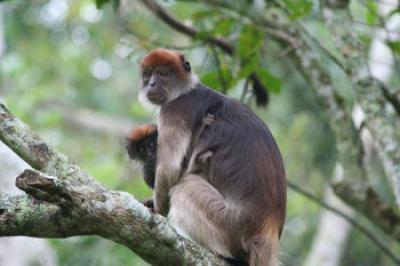New grants promote greater understanding of infectious disease
This post contributed by Lindsay Deel, a Ph.D. student in geography at West Virginia University and Intern with ESA’s journal Frontiers in Ecology and the Environment
Infectious diseases won’t know what hit them. A massive new collaborative effort between funding sources in the United States (US) and United Kingdom (UK) takes aim at infectious diseases from ecological and social perspectives, reported the National Science Foundation (NSF) in a recent press release. The overall goal of the suite of eight projects is to improve understanding of the factors affecting disease transmission, said NSF, but a major focus will also be on building models to help predict and control outbreaks.
Each of these projects examines different themes within the global context of infectious disease. For example, Tony Goldberg (Professor of Epidemiology, University of Wisconsin–Madison) and colleagues will investigate the spread of HIV from its origin in monkeys to humans by examining similar viruses that are currently impacting wild monkeys in Uganda. This project will also study human social factors – such as awareness, beliefs, and behaviors – surrounding the transmission of such diseases.
Another project helmed by David Rizzo (Professor of Plant Pathology, University of California–Davis) will explore how interacting forest disturbances – such as fire and drought – may control the emergence, persistence, and spread of invasive pathogens using the case of sudden oak death – a disease caused by a non-native pathogen, Phytophthora ramorum. “Over the past 10 years, potentially millions of trees in California and Oregon coastal forests have died as a result of this emerging disease,” explains Rizzo. “The goal of this new grant is [to] link this new disturbance agent (sudden oak death) with pre-existing disturbance agents (fire, drought) in coastal forests.”
Samantha Forde (Professor of Ecology and Evolutionary Biology, University of California – Santa Cruz) will lead a project using a simplified laboratory system of E. coli bacteria and its viruses as a model to study why some viruses have evolved the ability to infect multiple host species, while others can only infect one. “This will further a general understanding of the dynamics of disease in natural systems and help to improve public health initiatives,” she says.
From the modeling perspective, Armand Kuris (Professor of Biological Sciences, University of California at Santa Barbara) and colleagues will delve into the complexity of ecological systems and how the level of complexity might influence disease dynamics. Kuris and colleagues hope to bring the role of infectious diseases into the core of ecological thinking, comparable to the roles of predation, competition, disturbance and resource quality.
Joseph Tien (Professor of Mathematics, Ohio State University) will examine the recent cholera epidemic in Haiti. “Cholera hasn’t been reported in Haiti in decades, so we’re in new territory as far as what the disease will do here in the coming months and years. There are lots of different factors to consider — environmental conditions affecting the ability of the cholera bacteria to persist in water bodies, variation in water quality and sanitation in different locales, infection-derived immunity, and seasonal drivers, such as rainfall. We’re hoping to use mathematics to help piece the puzzle together.”
“A multidisciplinary approach to understanding disease transmission dynamics is critical for the prediction, prevention and control of emerging and reemerging disease threats,” says Christine Jessup, EEID program director at NIH’s Fogarty International Center. “This year’s projects address how human and natural processes influence infectious disease dynamics that are of global health concern, while building capacity for global health research.”
A full list of the funded projects can be found in the NSF press release.
Funding for the projects totals $17 million and comes from the US NSF, the US National Institutes of Health (NIH) Ecology and Evolution of Infectious Disease program, the UK Ecology of Infectious Diseases Initiative of the Biotechnology and Biological Sciences Research Council , and the UK Economic and Social Research Council .
Photos: Sudden Oak Death, Dave Rizzo, University of California, Davis; Capuchin monkey, Tony Goldberg, University of Wisconsin, Madison

